Note: This text was created with the help of AI.















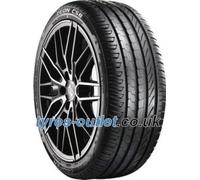


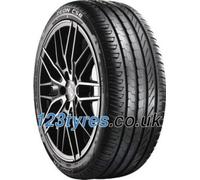
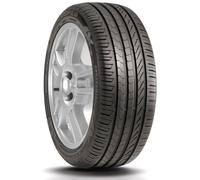








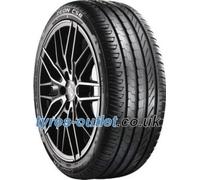
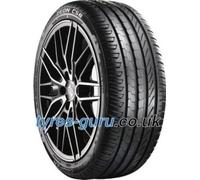



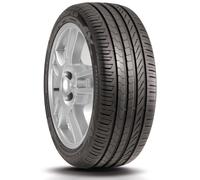
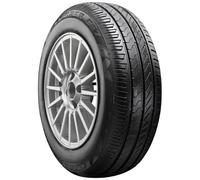





- 1
- 2
- 3
- 4
- 5
- next page
Exclusive Offers on Tyres: Your Ultimate Buying Guide
You must also replace the tyres if, despite their young age, the tyre tread depth is no longer at least 1.6 millimetres. This regulation is laid down in § 36 paragraph 2 of the StVZO.
For example, an unloaded small car often needs a tyre pressure between 2.0 and 2.3 bar, whereby the front tyres are inflated more than the rear tyres. If you now drive this with a full load, the recommended values range from 2.5 to 2.8 bars and you need to inflate the rear tires more than the front tires.
I recommend that you check the tire pressure at regular intervals to avoid excessive wear or potential running damage. Especially before long journeys, make sure that the tyre pressure is in accordance with the manufacturer's specifications.
Store the tyres in a dark, dry and cool place.
Increase the tyre pressure by approx. 0.5 bar above the manufacturer's specifications.
Thanks to a rim tree, you can store the tyres with rims horizontally and on top of each other to save space. For tyres without rims, I recommend storing them upright and vertically.
Before storing, check that the tyres still have sufficient tread depth and have not exceeded their maximum age. You can also remove foreign bodies and look for one-sided wear.
Tyre width in mm (195)
Height to width ratio in percent (65)
Tyre construction (R)
Rim diameter in inches (15)
Load index (91)
Speed index (T)
In addition, you will find the correct running direction marked with arrows. The M+S designation indicates that the tyres are suitable for slush and snow.
The snowflake with a jagged mountain in the background is only applied to tyres that are suitable as winter tyres and have undergone appropriate tests. Every winter or all-season tyre produced from 2018 onwards must have such a symbol.
You will find the DOT information on the outside of the tyre, impregnated just above the rim. Often the four numbers are framed.
The tyre market offers different types of tyres for cars, namely summer tyres and winter tyres, but also all season tyres that don't need to be changed every 6 months and special 4x4 tyres for SUVs and offroaders.
Of course, for motorcycles there are special motorcycle tyres and trucks need extra big truck tyres.
Exclusive Offers on Tyres: Your Ultimate Buying Guide
Welcome to the world of Tyres, where you can discover a variety of offers listed on pricehunter.co.uk! Whether you're looking for affordable options or premium brands, our price comparison service is here to simplify your shopping experience. With numerous choices available online, you'll find the perfect set of Tyres to enhance your vehicle's performance and safety. Let's dive into the essential aspects of choosing the right Tyres for your needs.
Understanding Tyre Types
Different Tyres serve various purposes, so it’s crucial to identify which type matches your driving style and conditions. Each category has distinct features that cater to specific requirements.
- All-Season Tyres: Versatile for various weather conditions.
- Winter Tyres: Enhanced grip on snow and ice.
- Summer Tyres: Optimized for wet and dry road performance.
- Performance Tyres: Designed for high-speed driving and better handling.
- Off-Road Tyres: Ideal for rugged terrains and adventures.
Tyre Specifications to Consider
When shopping for Tyres, understanding the specifications can help you make a more informed purchase. Each specification plays a role in how your vehicle behaves on the road.
- Width: Affects traction and handling.
- Aspect Ratio: Influences ride comfort and steering response.
- Diameter: Must match your vehicle's rims.
- Load Index: Indicates the maximum load the Tyre can carry.
- Speed Rating: Specifies the maximum speed capability of the Tyre.
Tyre Maintenance Tips
Maintaining your Tyres is essential for ensuring longevity and safety on the road. Regular upkeep can help you avoid premature wear and costly replacements.
- Regular Inflation: Keep Tyres inflated to the correct pressure.
- Rotation: Rotate Tyres every 5,000 to 7,500 miles.
- Alignment: Ensure proper alignment for even wear.
- Inspection: Check for damage or foreign objects periodically.
- Depth Measurement: Monitor tread depth for safety.
Choosing the Right Size
Selecting the right Tyre size is crucial for optimal performance and safety. Mismatched sizes can lead to handling issues and affect your vehicle's dynamics.
- Manufacturer Guidelines: Always refer to your vehicle's manual.
- Existing Tyres: Match the size of your current Tyres if they're suitable.
- Online Tools: Use online calculators to find compatible sizes.
- Consult Experts: Seek advice from professionals if unsure.
- Vehicle Modifications: Consider size adjustments if you’ve modified your vehicle.
Where to Buy Tyres
With the internet at your fingertips, purchasing Tyres has never been easier. Exploring various options can lead you to great savings and better selections.
- Price Comparison Sites: Utilize services like pricehunter.co.uk for the best deals.
- Online Retailers: Check trusted eCommerce platforms for a wide range of choices.
- Specialty Shops: Look for Tyre specialists offering competitive pricing.
- Seasonal Sales: Keep an eye out for discounts during sales events.
- Local Businesses: Support local dealers who may offer exclusive deals.
Note: This text was created with the help of AI.